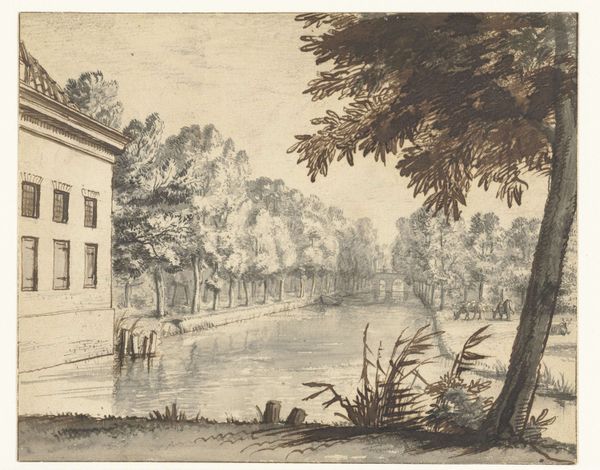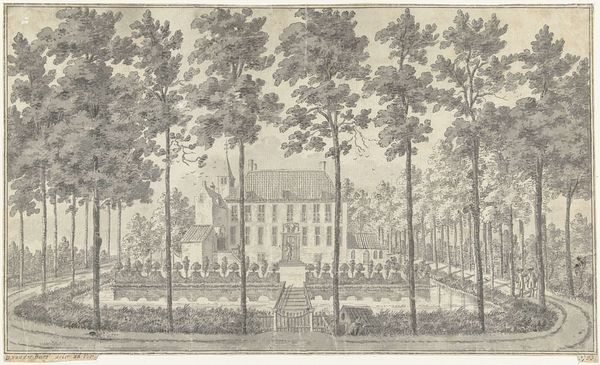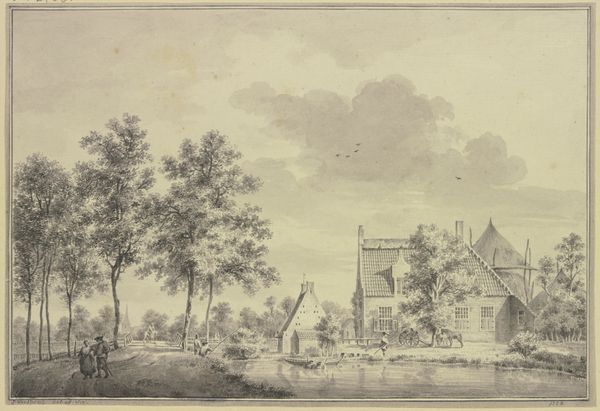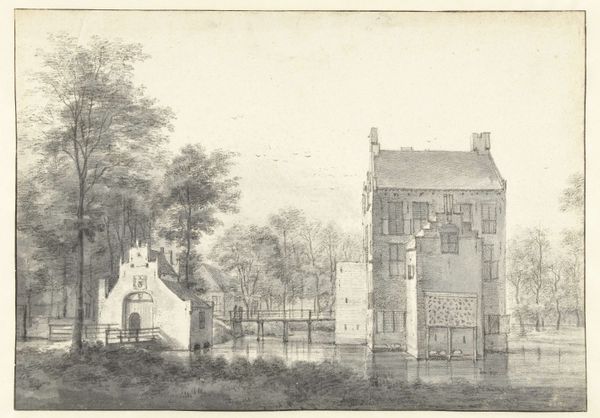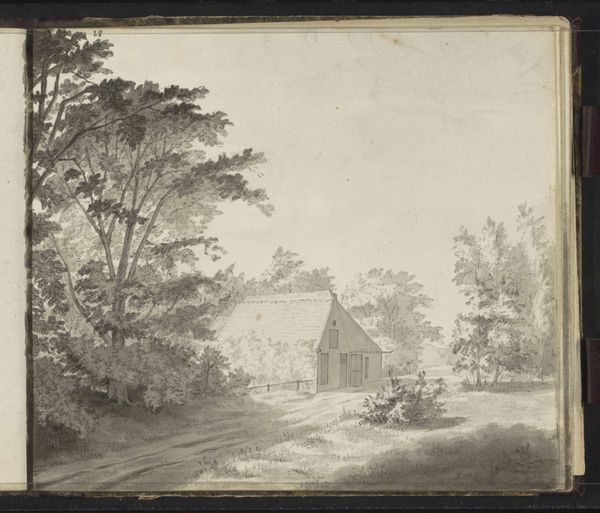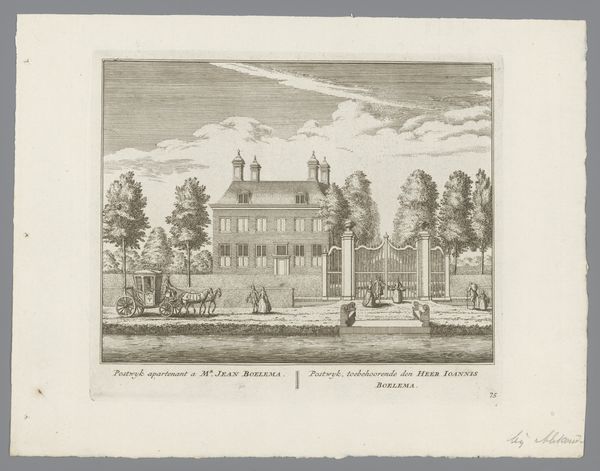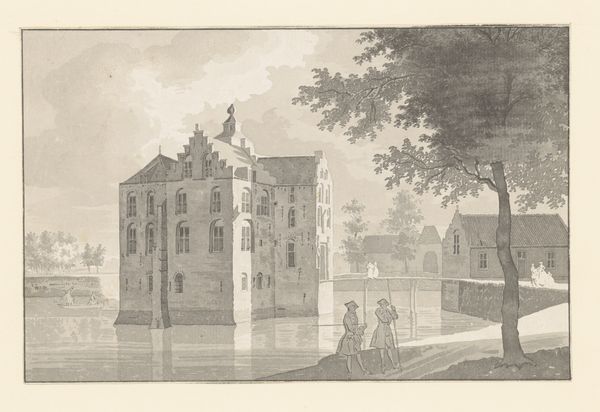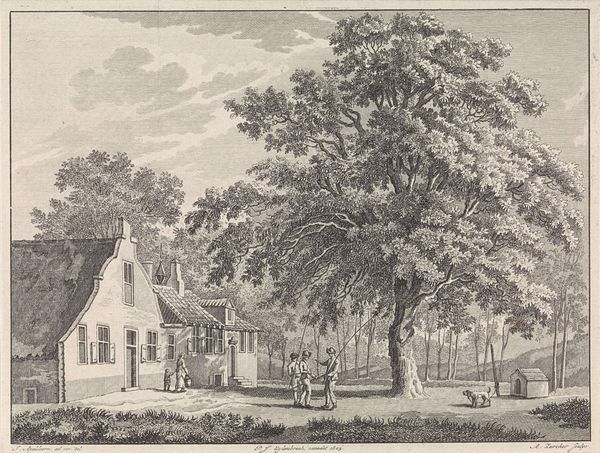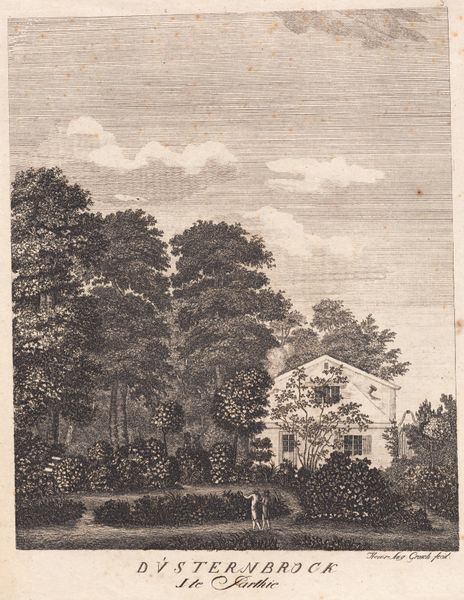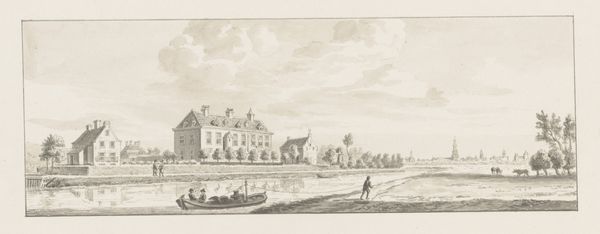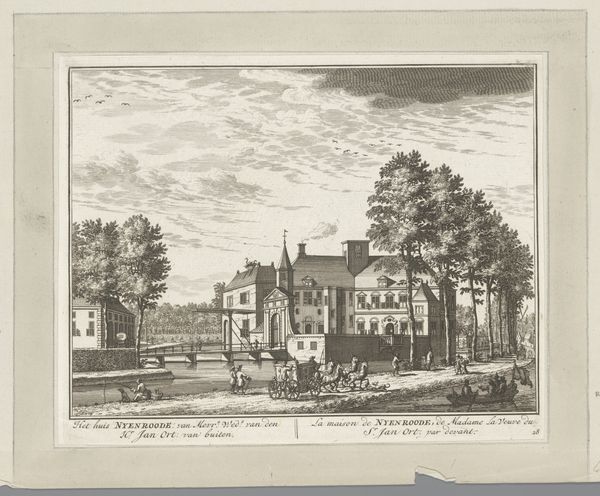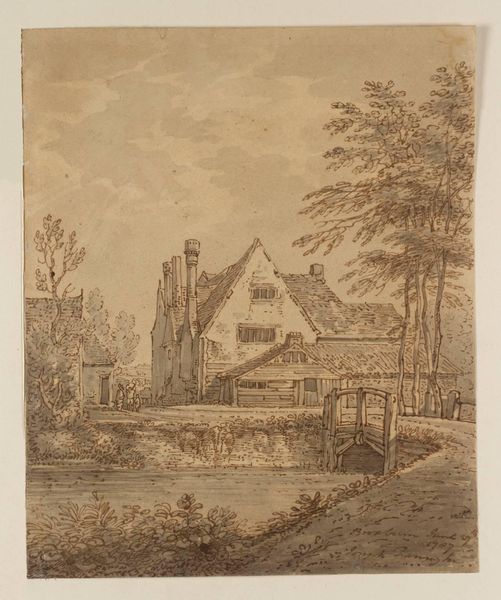
drawing, watercolor, pencil
#
drawing
#
landscape
#
watercolor
#
coloured pencil
#
romanticism
#
pen-ink sketch
#
pencil
#
watercolour illustration
#
genre-painting
#
pencil art
#
watercolor
Copyright: Rijks Museum: Open Domain
Editor: Here we have Hendrik Abraham Klinkhamer’s "Buitenplaats Scheijbeek bij Beverwijk," a drawing rendered in watercolor and pencil sometime between 1820 and 1872. The composition feels very serene, almost melancholic. What do you see in this piece? Curator: What strikes me immediately is the depiction of the country estate not merely as an architectural marvel, but as a signifier of social and economic power. We must ask, whose gaze is being prioritized here? Is Klinkhamer passively depicting the landscape, or is he actively participating in the construction of a specific narrative around Dutch landed gentry? Editor: So you're saying the image isn't just a neutral depiction of a place? Curator: Precisely. During this period, landscape art served to reinforce notions of ownership, privilege, and the romanticization of rural life – often at the expense of acknowledging the labor and social inequalities that sustained such estates. The picturesque composition can veil underlying power structures. Who actually benefited from "Buitenplaats Scheijbeek"? Editor: That gives me a lot to consider, viewing the tranquil image as a statement about power. The serene landscape hides something more complex. Curator: Exactly. By examining these artistic choices through a critical lens, we can begin to understand how art contributes to the broader social and political landscape. Are we appreciating the art or the historical and cultural implications around it? Editor: I see what you mean. It really changes how I perceive this artwork. Thanks so much! Curator: My pleasure. Always question the surface to uncover the deeper narratives that art holds within it.
Comments
No comments
Be the first to comment and join the conversation on the ultimate creative platform.
